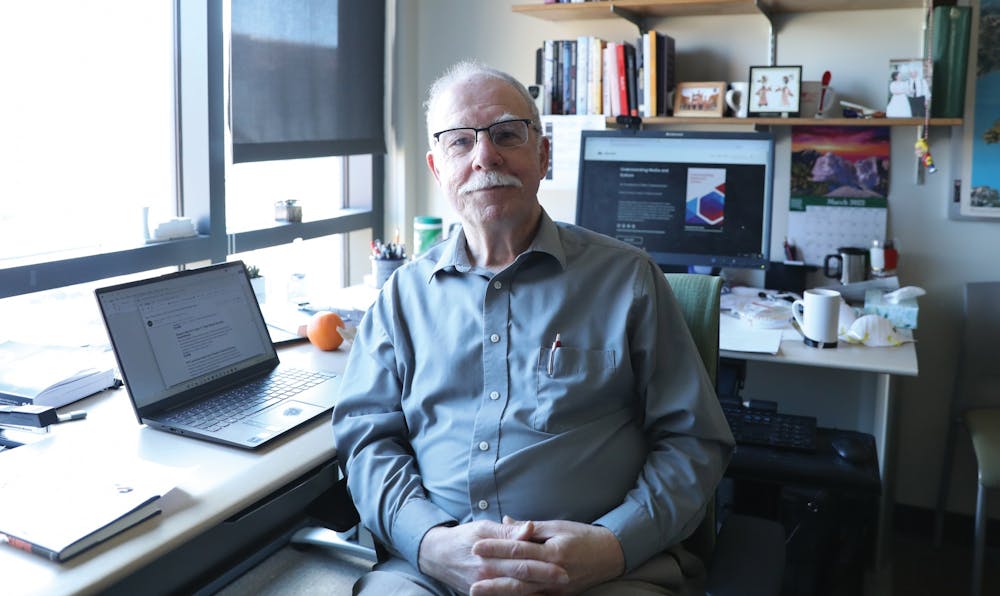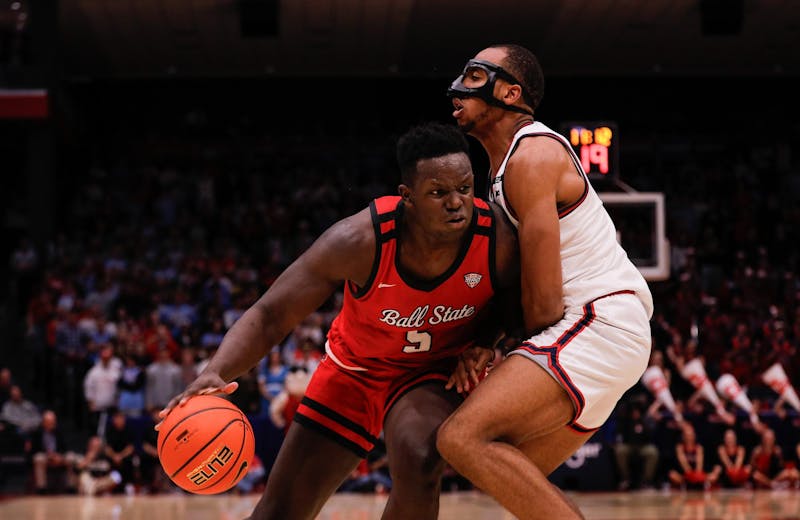Editor’s note: Tim Underhill and Dom Caristi are both professors in the Ball State College of Communication, Information and Media. Neither have any association with The Ball State Daily News.
Ball State is offering a one-time retirement incentive package for full-time faculty members.
Provost Susana Rivera-Mills said professors must be over the age of 55 and have spent at least 10 years working at Ball State to qualify for the retirement program. Their combined age and years of service must also equal or exceed 70.
“With this plan, we are able to accelerate the implementation of our strategic imperatives related to future instructional needs in the areas of innovative pedagogies and transdisciplinary teaching and learning,” Lea Cadieux, interim vice president for marketing and communications, said in an email.
Professors who enroll in the plan will receive a one-time payment of 125 percent of their annual salary, which is a “reasonable and appropriate amount,” Cadieux said.
Full-time faculty who are already enrolled in the Ball State University Group Health Plan can also choose to receive medical and dental coverage, which are part of Ball State’s retiree health programs.
“In order to adapt to the rapidly changing expectations for higher education, we must accelerate the implementation of these key strategies, and the VERIP [Voluntary Early Retirement Incentive Program] is an additional strategy for doing so,” Cadieux said.
Professors can elect to receive emeritus and honoratus status, allowing them to participate in commencement ceremonies, remain in tuition remission programs — which provide discounted tuition for immediate family members — and maintain a Ball State email account, among other benefits.
Cadieux said she could not provide an estimate of the number of faculty members expected to enroll because “it is being offered on a first-come, first-serve basis.” All eligible faculty are encouraged to apply.
“This plan was not created for budget reduction purposes,” Cadieux said. “Rather, the plan is one effort to accelerate the implementation of our strategic plan by introducing new modalities and for additional alternative learning experiences.”
The application for the retirement package is open from February to March 2022. Applicants must agree to retire by May 14, 2022.
Ball State President Geoffrey Mearns told Board of Trustees members Dec. 18, 2021, this date will give college deans time to decide where additional faculty will need to be hired for the 2022-23 academic year.
Cecil Bohanon, professor of economics, said a few professors in the economics department have already accepted the retirement package. Bohanon said the program “targets high-paid professors” who have tenure.
“The reality of higher education is getting people to retire is not as easy as all that,” Bohanon said. “As long as you can show that you’re competent, there’s no way for them to get rid of you.”
Another way faculty members can be encouraged to retire is through “phased retirement,” Bohanon said.
“There’s no expectations of research or public service, or for that matter, serving on committees,” Bohanon said. “Then, your faculty load in terms of teaching gets cut in half, and then you get half [the] pay.”
Phased retirement is voluntary, and “nobody forces it” onto faculty members, Bohanon said. Bohanon once considered phased retirement but said it is “half pay with full work.”
“When [the incentive plan] first came out, I thought, ‘Oh, my gosh, they were talking about me in the Board of Trustees meeting,’” Bohanon said. “I would be a target for that.”
Faculty who retired before this retirement package was created may consider it to be unfair, Bohanon said, but “there’s something about being in the right time, in the right place.”
Dom Caristi, professor of media, originally planned to retire in 2023, but changed his mind after learning about the retirement incentives being offered.
“When the pandemic hit in 2020, my wife asked me if I wanted to retire a little early. I said no, hoping I’d be able to end my career under more ‘normal’ circumstances — whatever that is nowadays,” Caristi said via email. “The early retirement incentive effectively shaved a year off what I had already planned to do.”
Caristi applied for the offer “the morning it became available.” The offer was advertised as being “first-come, first-serve,” so Caristi said he was advised to apply as soon as possible.
“For my own personal situation, it’s like being paid for [the] next academic year without having to work,” Caristi said. “There is a bit of a bonus, but much of that is likely to be lost to the added tax burden.”
Tim Underhill, associate lecturer of media, said he first heard about the retirement incentives “early in the semester” and later received an email informing him he was eligible.
“My initial thought was ‘I’m too young to retire,’” Underhill said via email. “Once I had a chance to think about it, I chose not to participate for financial reasons.”
Underhill said he does not have a job lined up to replace his current salary and “more importantly, [his] current benefits.”
“My greatest concern is paying for health care,” Underhill said. “I could not afford health insurance without that job benefit.”
Underhill said that the incentive plan will save the university money “by having people retire earlier than expected.”
“I’m happy for my colleagues who are able to take advantage of the offer,” Underhill said. “They will be missed both professionally and personally. They leave some shoes that will be difficult to fill.”
Contact Mackenzie Rupp with comments at msrupp@bsu.edu or on Twitter @kenzieer18.





The Daily News welcomes thoughtful discussion on all of our stories, but please keep comments civil and on-topic. Read our full guidelines here.